3.3: State of My Plate
- Page ID
- 2413
\( \newcommand{\vecs}[1]{\overset { \scriptstyle \rightharpoonup} {\mathbf{#1}} } \)
\( \newcommand{\vecd}[1]{\overset{-\!-\!\rightharpoonup}{\vphantom{a}\smash {#1}}} \)
\( \newcommand{\id}{\mathrm{id}}\) \( \newcommand{\Span}{\mathrm{span}}\)
( \newcommand{\kernel}{\mathrm{null}\,}\) \( \newcommand{\range}{\mathrm{range}\,}\)
\( \newcommand{\RealPart}{\mathrm{Re}}\) \( \newcommand{\ImaginaryPart}{\mathrm{Im}}\)
\( \newcommand{\Argument}{\mathrm{Arg}}\) \( \newcommand{\norm}[1]{\| #1 \|}\)
\( \newcommand{\inner}[2]{\langle #1, #2 \rangle}\)
\( \newcommand{\Span}{\mathrm{span}}\)
\( \newcommand{\id}{\mathrm{id}}\)
\( \newcommand{\Span}{\mathrm{span}}\)
\( \newcommand{\kernel}{\mathrm{null}\,}\)
\( \newcommand{\range}{\mathrm{range}\,}\)
\( \newcommand{\RealPart}{\mathrm{Re}}\)
\( \newcommand{\ImaginaryPart}{\mathrm{Im}}\)
\( \newcommand{\Argument}{\mathrm{Arg}}\)
\( \newcommand{\norm}[1]{\| #1 \|}\)
\( \newcommand{\inner}[2]{\langle #1, #2 \rangle}\)
\( \newcommand{\Span}{\mathrm{span}}\) \( \newcommand{\AA}{\unicode[.8,0]{x212B}}\)
\( \newcommand{\vectorA}[1]{\vec{#1}} % arrow\)
\( \newcommand{\vectorAt}[1]{\vec{\text{#1}}} % arrow\)
\( \newcommand{\vectorB}[1]{\overset { \scriptstyle \rightharpoonup} {\mathbf{#1}} } \)
\( \newcommand{\vectorC}[1]{\textbf{#1}} \)
\( \newcommand{\vectorD}[1]{\overrightarrow{#1}} \)
\( \newcommand{\vectorDt}[1]{\overrightarrow{\text{#1}}} \)
\( \newcommand{\vectE}[1]{\overset{-\!-\!\rightharpoonup}{\vphantom{a}\smash{\mathbf {#1}}}} \)
\( \newcommand{\vecs}[1]{\overset { \scriptstyle \rightharpoonup} {\mathbf{#1}} } \)
\( \newcommand{\vecd}[1]{\overset{-\!-\!\rightharpoonup}{\vphantom{a}\smash {#1}}} \)
\(\newcommand{\avec}{\mathbf a}\) \(\newcommand{\bvec}{\mathbf b}\) \(\newcommand{\cvec}{\mathbf c}\) \(\newcommand{\dvec}{\mathbf d}\) \(\newcommand{\dtil}{\widetilde{\mathbf d}}\) \(\newcommand{\evec}{\mathbf e}\) \(\newcommand{\fvec}{\mathbf f}\) \(\newcommand{\nvec}{\mathbf n}\) \(\newcommand{\pvec}{\mathbf p}\) \(\newcommand{\qvec}{\mathbf q}\) \(\newcommand{\svec}{\mathbf s}\) \(\newcommand{\tvec}{\mathbf t}\) \(\newcommand{\uvec}{\mathbf u}\) \(\newcommand{\vvec}{\mathbf v}\) \(\newcommand{\wvec}{\mathbf w}\) \(\newcommand{\xvec}{\mathbf x}\) \(\newcommand{\yvec}{\mathbf y}\) \(\newcommand{\zvec}{\mathbf z}\) \(\newcommand{\rvec}{\mathbf r}\) \(\newcommand{\mvec}{\mathbf m}\) \(\newcommand{\zerovec}{\mathbf 0}\) \(\newcommand{\onevec}{\mathbf 1}\) \(\newcommand{\real}{\mathbb R}\) \(\newcommand{\twovec}[2]{\left[\begin{array}{r}#1 \\ #2 \end{array}\right]}\) \(\newcommand{\ctwovec}[2]{\left[\begin{array}{c}#1 \\ #2 \end{array}\right]}\) \(\newcommand{\threevec}[3]{\left[\begin{array}{r}#1 \\ #2 \\ #3 \end{array}\right]}\) \(\newcommand{\cthreevec}[3]{\left[\begin{array}{c}#1 \\ #2 \\ #3 \end{array}\right]}\) \(\newcommand{\fourvec}[4]{\left[\begin{array}{r}#1 \\ #2 \\ #3 \\ #4 \end{array}\right]}\) \(\newcommand{\cfourvec}[4]{\left[\begin{array}{c}#1 \\ #2 \\ #3 \\ #4 \end{array}\right]}\) \(\newcommand{\fivevec}[5]{\left[\begin{array}{r}#1 \\ #2 \\ #3 \\ #4 \\ #5 \\ \end{array}\right]}\) \(\newcommand{\cfivevec}[5]{\left[\begin{array}{c}#1 \\ #2 \\ #3 \\ #4 \\ #5 \\ \end{array}\right]}\) \(\newcommand{\mattwo}[4]{\left[\begin{array}{rr}#1 \amp #2 \\ #3 \amp #4 \\ \end{array}\right]}\) \(\newcommand{\laspan}[1]{\text{Span}\{#1\}}\) \(\newcommand{\bcal}{\cal B}\) \(\newcommand{\ccal}{\cal C}\) \(\newcommand{\scal}{\cal S}\) \(\newcommand{\wcal}{\cal W}\) \(\newcommand{\ecal}{\cal E}\) \(\newcommand{\coords}[2]{\left\{#1\right\}_{#2}}\) \(\newcommand{\gray}[1]{\color{gray}{#1}}\) \(\newcommand{\lgray}[1]{\color{lightgray}{#1}}\) \(\newcommand{\rank}{\operatorname{rank}}\) \(\newcommand{\row}{\text{Row}}\) \(\newcommand{\col}{\text{Col}}\) \(\renewcommand{\row}{\text{Row}}\) \(\newcommand{\nul}{\text{Nul}}\) \(\newcommand{\var}{\text{Var}}\) \(\newcommand{\corr}{\text{corr}}\) \(\newcommand{\len}[1]{\left|#1\right|}\) \(\newcommand{\bbar}{\overline{\bvec}}\) \(\newcommand{\bhat}{\widehat{\bvec}}\) \(\newcommand{\bperp}{\bvec^\perp}\) \(\newcommand{\xhat}{\widehat{\xvec}}\) \(\newcommand{\vhat}{\widehat{\vvec}}\) \(\newcommand{\uhat}{\widehat{\uvec}}\) \(\newcommand{\what}{\widehat{\wvec}}\) \(\newcommand{\Sighat}{\widehat{\Sigma}}\) \(\newcommand{\lt}{<}\) \(\newcommand{\gt}{>}\) \(\newcommand{\amp}{&}\) \(\definecolor{fillinmathshade}{gray}{0.9}\)
National Health Education Standards (NHES)
- 1.12.7 Compare and contrast the benefits of and barriers to practicing a variety of healthy behaviors, such as eating balanced meals with foods in the appropriate portion size.
- 7.12.3 Demonstrate a variety of behaviors that avoid or reduce health risks to self and others, such as eating balanced meals with foods in the appropriate portion size.
Wellness Guidelines
- Increase fruit and vegetable consumption

- Instruction: In a group or think-pair-share format, have participants discuss following questions. Acknowledge those who have progressed towards their goal(s) and encourage anyone who wants to change or modify their goal to get 1:1 support.
- Share: Let’s discuss our SMART Goals.
- How is it going with your current SMART goal?
- What are some ways you can improve progress towards your goal? (Grows)
- What are some ways you are doing well with progress towards your goal? (Glows)
GUIDELINE: Increase Fruit and Vegetable Consumption
- Share: What guideline do you think is related to today’s lesson? Who has a SMART Goal related to this guideline?
- Instruction: Select one activity.
- Guideline Popcorn: Have the group list all 8 guidelines rapidly in popcorn format.
- Guideline Charades: Divide participants into groups and assign each a guideline. Each group has to silently act out the guideline for the rest to guess.
- Two Truths and One Lie:
- Truth 1: There are many processed and pre-packaged foods on the market that are being advertised as “made with vegetables or fruits.” For example, fruit snacks, vegetable chips, and fruit “drinks”. Most of these products are high in sugar, salt, fat and contain little amounts of real fruit or vegetables. Processed and packaged foods also tend to be more expensive. Your best buy for health is whole, unprocessed or minimally processed vegetables and fruit.
- Truth 2: Frozen and canned produce can be just as nutritious since it’s usually picked and packed at the peak of ripeness when nutrient levels are highest.
- Lie: The more colorful the fruits and vegetables, the more nutritious they are. An optimum healthful diet would include fruits and vegetables from the full-color spectrum to obtain the full benefit of nutrition associated with each pigment in the food spectrum. Nonetheless, the ‘white/brown’ category is not less nutritious than more vibrantly colored produce.
4. Questions to discuss and/or journal:
-
What fruits and vegetables do you like? What don't you like? Why do you like some and dislike others?
- What positive health benefits can you get from fruit?
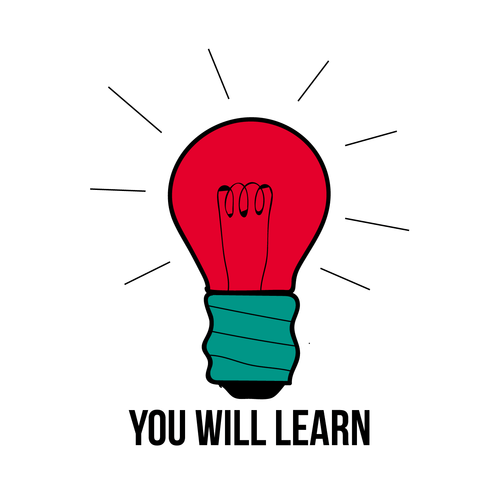
- The food groups that make a balanced meal and each food group’s recommended servings per day.
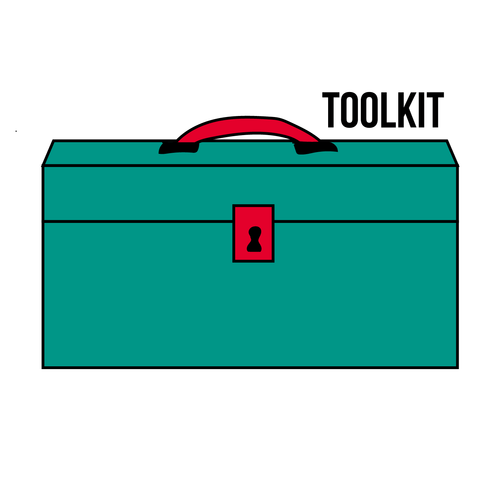
- Worksheets
- Slide presentation
- Images or examples of food in all 5 food groups (see The Five Food Groups activity for examples)
- MyPlate board or printouts for each group during MyPlate Relay activity
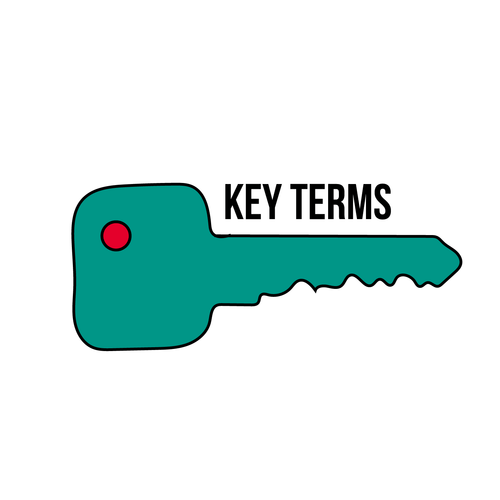
[As defined by USDA & HHS, 2015; Nestle, 2013; USDA, 2016]
- Eating Pattern: The combination of foods and beverages you eat and drink over time.
- MyPlate: A guide for how to balance your plate, cup, and bowl with the five food groups.
- Food Group: A collection of foods that have the same types of nutrients and benefits for the body.
- Serving Size: A standardized amount of a food, such as a cup or an ounce that can help you calculate the calories and nutrients in that food.
- Fruits: Naturally low in fat, sodium, and calories and have important nutrients.
- Vegetables: Naturally low in fat and calories and have important nutrients.
- Grains: Important sources of nutrients such as fiber, vitamins, and minerals. Examples: wheat, rice, oats, cornmeal, barley or another cereal grain.
- Protein foods: Provides your body with the amino acids for your muscles and tissues to grow and heal and keeps your immune system strong. Examples: meat, poultry, seafood, beans and peas, eggs, processed soy products, nuts, and seeds.
- Dairy: Helps build your bones and teeth and maintains bone mass. Examples: milk, yogurt, and cheese; choose fat-free or low fat.
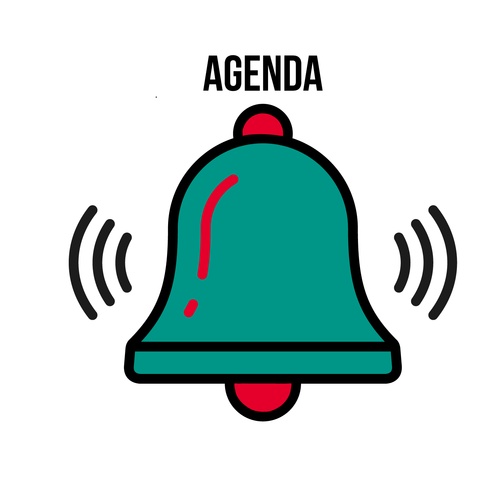
- Do Now
- MyPlate
- The Five Food Groups
- Plan It Relay
- Exit Ticket
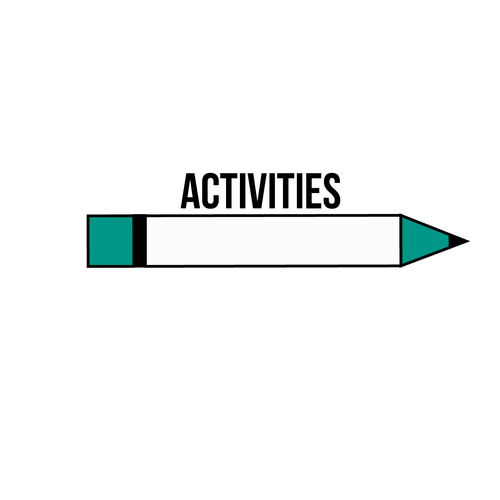
Do Now:
- Instruction:
- Have participants answer the following question on their worksheet or by sharing out loud.
- What does your typical meal look like?
- Have participants answer the following question on their worksheet or by sharing out loud.
- Share:
- What you decide to eat determines your eating pattern, which is the combination of foods and beverages you eat and drink over time (USDA & HHS, 2015).
- How do you know what your eating pattern should be? There is a tool called MyPlate. It helps you balance your plate, cup, and bowl with the five food groups (USDA, 2017). It also shows you how much of each food group you should eat.
Good to Know: The Five Food Groups
- Set Up:
- Print or project the MyPlate visual (linked here).
- Instruction:
- Point out each food group on MyPlate while reviewing.
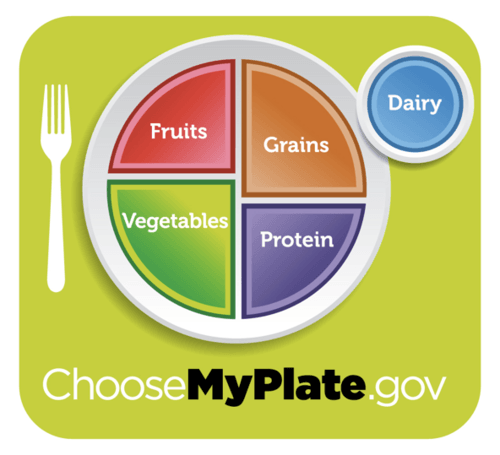
Share:
- MyPlate shows you which kinds of foods you should eat and how much.
- There are five food groups in MyPlate— fruits, vegetables, grains, protein, and dairy.
- Use this visual when placing food on your plate or in your bowl as a way to be sure you’re including all five food groups in the appropriate proportion.
- Now, let’s go over each food group.
- The proper serving size, examples of each and the recommended servings per day based on your gender and age.
- Note: Serving sizes are based on individuals who get less than 30 minutes per day of moderate physical activity beyond normal daily activities and are between the ages 9 to 18. Read more at www.choosemyplate.gov.
Real World Relevance: The Five Food Groups
FRUITS
- Share:
- Naturally low in fat, sodium, and calories and have important nutrients. Maybe fresh, canned, frozen, or dried, and may be whole, cut-up, or pureed (USDA, 2017).
- Place the fruits on the upper left of the plate. The amount of fruits on your plate should be a little less than a quarter of your plate.
- Examples of 1 cup of fruits are:
- ½ of a large apple (3 ¼ in. diameter) or 1 small apple (2 ¼ in. diameter)
- 1 large banana (8-9 in. long)
- 1 cup of fresh, frozen or canned fruit
- 1 cup of 100% fruit juice or
- ½ cup of dried fruit
- Individuals need between 1-2 cups of fruit per day. Your gender and age determine exactly how many servings are recommended. Refer to the chart below or to choosemyplate.gov to determine the appropriate serving and read more.
 Image created by HealthCorps staff: Ally Hoffman & Kristina Mariswamy
Image created by HealthCorps staff: Ally Hoffman & Kristina MariswamyVEGETABLES
- Share:
- Naturally low in fat and calories and have important nutrients. Maybe raw or cooked; fresh, frozen, canned, or dried/dehydrated; and may be whole, cut-up, or mashed (USDA, 2017).
- Place the vegetables in the lower left of the plate. The amount of vegetables should be a little more than a quarter of the plate.
- Examples of 1 cup of vegetables are:
- 1 cup of raw or cooked vegetables
- 1 cup of vegetable juice
- 2 cups of raw leafy greens
- Individuals need between 1-3 cups of vegetables per day. Refer to the chart below or to choosemyplate.gov to determine the appropriate serving and read more.
 Image created by HealthCorps staff: Ally Hoffman & Kristina Mariswamy
Image created by HealthCorps staff: Ally Hoffman & Kristina MariswamyGRAINS
- Share:
- Important sources of nutrients such as fiber, vitamins, and minerals (USDA, 2016).
- There are two types of grains – whole grains and refined grains.
- Whole grains contain the entire grain kernel ― the bran, germ, and endosperm. Examples are whole-wheat flour, oatmeal, and brown rice.
- Refined grains have been milled which is a process that removes the outer layers- the bran and germ – to give them a finer texture and longer shelf life.
- However, milling also removes the good stuff- dietary fiber, vitamins, and minerals. Examples are white flour, white bread, and white rice.
- At least half of all the grains you eat should be whole grains, not refined (USDA, 2016).
- Place the grains on the upper right of the plate. The amount of grain should be a little more than a quarter of the plate.
- Examples of 1 ounce-equivalents of grains are:
- 1 regular slice of bread
- ½ cup cooked oatmeal, rice, or pasta
- Individuals need between 3-8 ounces of grains per day. Your gender and age determine exactly how many servings are recommended. Refer to the chart below or to choosemyplate.gov to determine the appropriate serving and read more.
 Image created by HealthCorps staff: Ally Hoffman & Kristina Mariswamy
Image created by HealthCorps staff: Ally Hoffman & Kristina MariswamyPROTEIN FOODS
- Share:
- Provides your body with the energy for your muscles and tissues to grow and heal and keeps your immune system strong (USDA, 2016). Put your protein in the lower right of your plate. The amount of protein should be a little less than a quarter of the plate.
- Examples of 1 ounce-equivalents of protein foods are:
- 1 ounce of meat, poultry, or fish (for reference, a palm-sized piece of lean meat (turkey), chicken or fish is about 3 oz.)
- 1 egg
- ½ ounce of nuts
- 1 tablespoon of peanut or almond butter
- ¼ cup of cooked beans or peas
- Individuals need between 2-7 ounces of protein per day depending on age and gender. Refer to the chart below or to choosemyplate.gov to determine the appropriate serving and read more.
 Image created by HealthCorps staff: Ally Hoffman & Kristina Mariswamy
Image created by HealthCorps staff: Ally Hoffman & Kristina MariswamyDAIRY
- Share:
- Helps to build your bones and teeth and maintains bone mass (USDA, 2016). Place your dairy off to the side of the plate.
- Examples of 1 cup of dairy are:
- 1 cup of milk or yogurt
- 2-3 slices of cheese
- Individuals need between 2-3 cups of dairy per day. Refer to the chart below or to choosemyplate.gov to determine the appropriate serving and read more.
 Image created by HealthCorps staff: Ally Hoffman & Kristina Mariswamy
Image created by HealthCorps staff: Ally Hoffman & Kristina MariswamyHands-On: Plan It Relay
- Post a set of food pictures representing each food group (5) on the board or wall or put a set of food props or real food items in a box or spread across a table. Include 3 examples from each food group (15 total).
- Set Up:
- • Instruction:
- Split participants into small groups (3-5), and provide each with a MyPlate board or print out.
- Groups should set up opposite from the food pictures, props or items.
- Share:
- The goal of this activity is to be the first group to successfully match food items to the appropriate food group and make a whole, balanced MyPlate meal.
- When I say, “Go!” the first person will quickly go to the board, box or table, grab a food picture, prop or item and head back to fill in their MyPlate board or print out.
- On your way back, high-five the next person in line so they can grab the next food picture, prop or item.
- Ideally, each person will want to choose a food from a different food group. Repeat until your plate is complete.
- If you bring back a picture, prop or item from a food group that has already been filled, another must use his or her turn to return it to the board.
- The group who completes a MyPlate meal first wins.
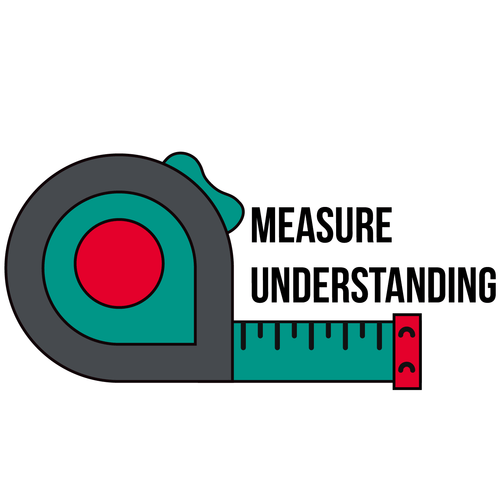
Exit Ticket:
- Instruction:
- Have participants write on their worksheet or share out loud the following question(s).
- What is an example of a balanced meal?
Bibliography
- Nestle, M. (2013). Food Politics: How the Food Industry Influences Nutrition and Health. Berkeley, CA: University of California Press.
- U.S. Department of Agriculture. (2016). All About the Dairy Group. Retrieved From: https://www.choosemyplate.gov/dairy
- U.S. Department of Agriculture. (2017). All About the Fruit Group. Retrieved From: https://www.choosemyplate.gov/fruit
- U.S. Department of Agriculture. (2016). All about the Grains Group. Retrieved From: https://www.choosemyplate.gov/grains
- U.S. Department of Agriculture. (2017). MyPlate. Retrieved From: www.choosemyplate.gov/MyPlate
- U.S. Department of Agriculture. (2016). All about the Protein Foods Group. Retrieved From: https://www.choosemyplate.gov/protein-foods
- U.S. Department of Agriculture. (2017). All About the Vegetable Group. Retrieved From: https://www.choosemyplate.gov/vegetables
- U.S. Department of Agriculture & U.S Department of Health and Human Services. (2015). Dietary Guidelines for Americans. Retrieved From: https://health.gov/dietaryguidelines...Guidelines.pdf
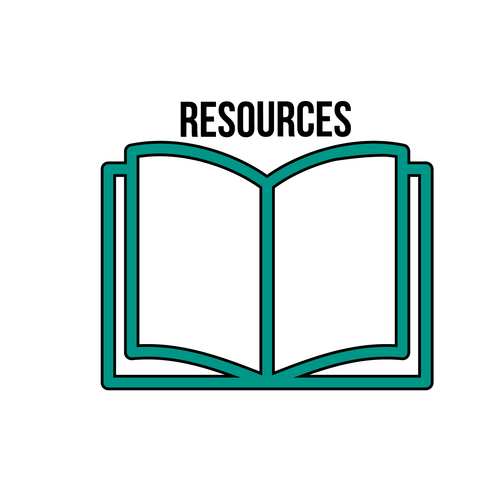
This lesson was created in partnership with Albert Einstein College of Medicine Department of Epidemiology and Population Health with funding support by the National Institutes of Health NIDDK Grant R01DK097096.

